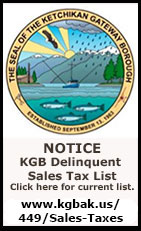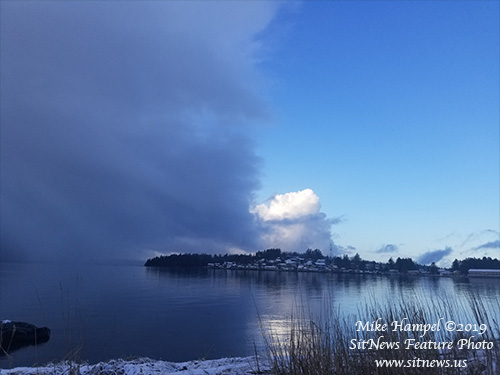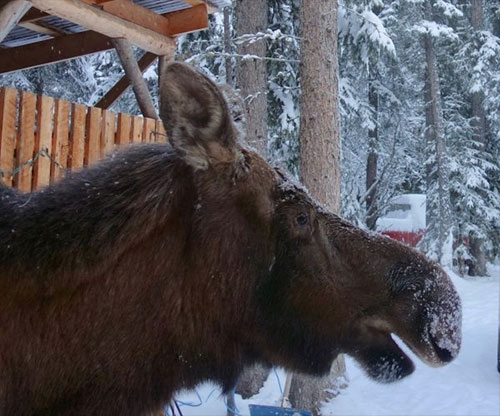






Weekly Specials
Online Shopping; Pickup or Delivery |
|













 Contact Contact 
 Webmail
Letters Webmail
Letters
 News Tips News Tips
 Copyright Info Copyright Info
 Archives Archives
Quick News
Search
 Alaska Alaska
 Ketchikan Ketchikan
 SE Alaska SE Alaska
Columns
- Articles
 Dave Kiffer Dave Kiffer
 Money Matters Money Matters
Historical
Ketchikan
 June Allen June Allen
 Dave
Kiffer Dave
Kiffer
 Louise
B. Harrington Louise
B. Harrington
Sports
 Ketchikan Links Ketchikan Links
Public Records
 FAA Accident Reports FAA Accident Reports
 NTSB
Accident Reports NTSB
Accident Reports
 Court Calendar Court Calendar
 Recent Filings & Case Dispositions Recent Filings & Case Dispositions
 Court Records Search Court Records Search
 Sex Offender Reg. Sex Offender Reg.
 Public Notices Public Notices
 Alaska Recall Alerts Alaska Recall Alerts
 Recalls.gov Recalls.gov
 AST Daily Dispatch AST Daily Dispatch
 KTN
Police Reports KTN
Police Reports
 Juneau Police Reports Juneau Police Reports
Weather,
Webcams
 Today's
Forecast Today's
Forecast
 KTN
Weather Data KTN
Weather Data
 AK
Weather Map AK
Weather Map
 AK Weathercams AK Weathercams
 AK Earthquakes AK Earthquakes

|
|

Friday
January 04, 2019

|
Storm Heading Towards Craig
Front Page Feature Photo By MIKE HAMPEL ©2018
|
|
Southeast Alaska: Southeast Alaska Jobs Forecast for 2019 By MARY KAUFFMAN - After three years of job losses, Alaska is set to regain a small amount of lost jobs in 2019 as some industries show signs of recovery. The Alaska Department of Labor is forecasting 0.4 percent job growth in 2019 statewide. The three drivers of job growth statewide will be in military, oil and tourism jobs.
According to the latest edition of Alaska Economic Trends, growth is in Southeast Alaska's forecast for the first time since 2012: a slight gain of about 50 jobs, or 0.1 percent. Economist Karinne Wiebold with the Alaska Department of Labor reported the department expects a handful of industries to add a modest number of jobs in 2019, offsetting losses that come from government cuts and poor fishing runs.
Wiebold writes that continuing population loss will also dampen Southeast Alaska's employment outlook for 2019.
As with the state overall, Wiebold reported that more people left Southeast than moved in from 2016-2017, marking 5 straight years of net migration losses for both the Southeast Region and the state. For Southeast, it was the third straight year that natural population increase wasn't large enough to offset the net migration loss, shrinking the overall population.
According to January 2019 Alaska Economic Trends, Southeast lost 900 people overall in 2017, bringing its total population loss to 1,600 since 2014. According to Wiebold's article, the current state recession and relative strength of the Lower 48's economy largely drove the population decline in Southeast.
Wiebold writes that net migration losses mean fewer workers and less local spending because households that move tend to have at least one working-age adult. She reported that this is especially relevant in Southeast because the region's population is older so its economy has fewer potential workers to lose.
Southeast Alaska's largest age group is between 55 and 59 and the second largest age group is 60 to 64. Wiebold writes that many baby boomers arrived when Alaska was awash in oil money during the late 1970s and early '80s and she says they will continue to age out of the workforce in the near future.
Wiebold sees growth in health care in Southeast saying an aging population increases demand for health care forecasting to add 50 jobs in 2019.
According to Wiebold's article, the Alaska Department of Labor expects health care jobs to continue to grow - as it has grown most years - unless the population continues to decline or health care policies change at the state of national levels.
Wiebold reports some gains for mining and construction is in the 2019 forecast for Southeast Alaska. Southeast is home to two active mines near Juneau, Kensington and Greens Cree, which extract gold and silver. She reports that natural resources and mining employment grew by 50 jobs in 2017 and another 50 in 2018, and the department is forecasting similar growth for 2019. - More...
Friday PM - January 04, 2019
|

Ketchikan's First Baby of 2019
Zoey Pandile, Ketchikan's First Baby of 2019, and parents Ailene Buendia and Virgil Pandile and her sister Chloe Pandile.
Photo courtesy Ketchikan Medical Center |
|
Fish Factor: Government Shutdown Has Caused Few Problems in Alaska Fisheries - Yet By LAINE WELCH - The government shutdown has caused few problems so far in Alaska’s fisheries, but concern is growing as it enters a third week.
The shutdown of nine out of 15 federal departments and agencies on Dec. 21 has furloughed about 800,000 workers nationwide, most with no pay, including fishery oversight and research jobs. In many cases, that means there’s no one to issue fishing permits, licenses or other documents and services required before setting out.
“I have not heard of any problems, but that’s not to say that there aren’t any,” said Forrest Bowers, acting director of the Alaska Dept. of Fish and Game’s commercial fisheries division, referring to the cod fishery that opened on January 1 and the ongoing Bering Sea crab fishery.
State operations are not directly affected by the shutdown, but fisheries in Alaska waters intertwine and are closely timed with the federal ones. In the co-management case of Bering Sea crab, for example, the feds provide the surveys and science, the state does the rest.
“The state sets the total allowable catch and we handle the in-season management of the fishery, including vessel registrations, observer coverage and harvest tracking,” Bowers said.
The cod and crab boats had their paperwork in order prior to the shutdown, Bowers said, except for one straggler who needed the services of a furloughed electronic scale inspector and was stuck at the dock.
“They haven’t been able to have that scale inspection done and it’s delaying them. We’re hoping we can get that resolved for them,” Bowers said, adding that other such “behind the scenes” unavailable services in the tightly regulated fisheries could cause problems as more boats come on line this month.
The shutdown also is causing a headache for federally contracted onboard fishery observers who collect stock data and track what’s coming and going over the rails. Regulators at NOAA are not holding debriefings for the observers when they return from a fishing trip, which are required before they can sign on to another.
That’s sidelined five of her employees so far, said Stacey Hansen, program manager at Saltwater, an Anchorage-based company that provides observer services to the fleets.
“I’ve got a group of people that are now stuck. They’re just sitting and waiting until they can get on with their lives,” Hansen told Alaska’s Energy Desk.
Meanwhile, Alaska’s largest fishery, pollock, gets underway on January 20 along with openers for flounders and myriad other whitefish.
“I think there is uncertainty right now about what’s going to happen,” Bowers said. “Fortunately, we have a pretty sophisticated group of folks in the fishing industry in Alaska who are very professional and know how to do their jobs. It helps a lot when there is a good working relationship with the managers; it makes these uncertain times go more smoothly.” - More...
Friday PM - January 04, 2019
|
Alaska Science: What’s the purpose of a moose’s long nose? By Ned ROZELL - A scientist from Ohio once pondered why moose have such long noses.
Why, one might ask, does a scientist from Ohio care? It can tell them about evolution, said Lawrence Witmer, a biologist and professor of anatomy at Ohio University. As part of a study of unusual noses on dinosaurs and modern animals, Witmer and his colleagues examined the enigmatic nose of the moose.
Because moose disappeared from Ohio long ago, Witmer looked farther north for help, and he found it in Newfoundland, Canada’s easternmost province. There, workers for the Department of Natural Resources shipped him four frozen heads of road-killed moose.
With moose heads intact in his Athens, Ohio, lab, Witmer dissected the noses for a closer look, finding enough compelling information to write a paper published in the Journal of Zoology.
Before Witmer’s study, scientists had speculated on why the moose might have evolved such a long nose while other members of the deer family have relatively short noses.
One argument was that a long nose could help a moose shed heat from its huge body after running long distances to avoid predators. Witmer and his co-workers found this adaptation unlikely because few blood vessels exist near the outside surface of a moose’s nose.
Another reason a moose might have a big nose is to better sniff out predators or potential mates. Witmer found that idea had merit, and his attention soon turned to a moose’s nostrils. - More...
Friday PM - January 04, 2019
Alaska Science: Life recycled on a wilderness gravel bar By NED ROZELL - At the approach of a canoe, the wolverine tears into the woods, its claws spitting mud. Seconds later, ravens scatter from what resembles two branches reaching from a driftwood log.
After the animals flee the Fortymile River gravel bar, the driftwood turns into chewed velvet antlers the size of a folding chair. A fleshy backbone ropes from a skull, extending to rib fragments and a blade of hipbone, its sockets empty. A few tufts of hide lay amid rocks, but the rest of the caribou — so fresh it barely smells — has vanished.
How could a 300-pound animal disappear so fast? From evidence at the kill site, here’s what might have happened:
Seven wolves, a pack that includes two parents and two pups born in early June, spot a young caribou limping toward the Fortymile River. As the caribou, its right front leg injured in a fall, enters the water to swim across, the pack holds. When the caribou emerges dripping on their side of the river, the wolves move.
The pack rushes from downwind, surprising the chocolate-brown bull. With practiced teamwork, the wolves drag down the caribou. The animal gasps its last breath and falls on round rocks powdered with river silt.
There, the recycling of a large mammal begins. Using their teeth with astonishing force, the wolves rip open the caribou’s hide from the puncture wounds on its throat.
The wolves tug at hair, flesh and savored internal organs. Crouching at the caribou like pigs at a teat, they gulp down wet, warm chunks. The seven creatures will share most of the caribou, one of many meals that help sustain 100-pound animals in hungry country. - More...
Friday PM - January 04, 2019
|
 |
Obituary: Virginia Schulz; August 3, 1925 - December 26, 2018 - Virginia Gene
Schulz, known to family and friends as Ginger, passed away on December 26, 2018, at the Norse Home in Seattle, Washington. Ginger was born on August 3, 1925 in Tacoma, Washington to John Frederic and Margaret (Mansfield) Van Gilder.
The family moved to Ketchikan, Alaska in 1930, when Ginger was five years old. Ginger grew up in Ketchikan and graduated from Ketchikan High School in 1943. She married Louis Carl Veerman in Ketchikan in 1944 and they had three children while living in Ketchikan.
In 1958 the family moved to Kodiak and lived there until 1964. During their time in Kodiak, Ginger worked for the City of Kodiak and was a volunteer librarian for the public library.
Her first marriage ended in 1964 and she returned to Ketchikan, where she worked in the clerk’s office for the Alaska Court System. She married Kenneth H. Larsen in Ketchikan in 1965 and they enjoyed a happy marriage until he died of cancer in 1973.
Ginger worked as a volunteer for the American Cancer Society for many years thereafter. Ginger married Ellsworth W. (“Dutch”) Schulz in 1975 and relocated to Anchorage, where she continued to work for the Alaska Court System. Ginger and Dutch enjoyed many happy years together in Anchorage, at Settlers’ Bay on Knik Arm, and at their cabin on Lake Tyone. Ginger and Dutch spent one entire winter season at their Lake Tyone cabin from ice-up through break-up and they entertained family and friends in that beautiful remote Alaska setting for many summers. - More...
Friday PM - January 04, 2019
|
 |
DANNY TYREE: Stop Me Before I Demolish A Credit Card Machine - I knew it wasn't just me!
In recent weeks I've overheard multiple shoppers gripe about navigating the wildly dissimilar credit card setups at different establishments.
Credit card machines have gotten just as confusing as the clothing and footwear business, where arrogant designers create fashions with sizes that have no relation to other designers' sizes. ("Do you want the size zero that is suitable for supermodels or the size zero that substitutes for a sofa cover?")
I'm not in favor of price-fixing, but we could use some COLLUSION to get credit card reader hardware and software consistent.
Some stores compel you to scrawl a signature that would baffle a doctor. ("Teacher says, every time a customer scrawls his name, an angel gets an unsolicited prescription for Lipitor.")
Others want you to verify the total in addition to signing. Too bad we don't have a similar choice in approving the federal deficit. ("How much??? That ain't right, y'all!")
- More...
Friday PM - January 04, 2019
 |
TOM PURCELL: Resolutions Our Politicians Won't Keep - 'Celebrating the holidays with friends and family the past few weeks was great, but I'm tired, bloated and crabby.'
'The New Year is upon us! What a great opportunity to start fresh and resolve to do great things in 2019.'
'How about I share some resolutions I hope our political leaders will keep. Here's one: Federal government, please stop spending so much!'
'Spending is certainly out of control. Federal debt is up nearly $1.4 trillion the past year. That's nearly $11,000 in debt per American household - nearly $4,200 per person. And as interest rates rise, the payments on our debt are skyrocketing.'
'I'll tell you what else is skyrocketing: my family's health insurance premiums. My deductibles are so high, we'll end up in the poorhouse if any of us gets sick. Hey, Democrats and Republicans, can you resolve to come up with a bipartisan solution for the massive cost of health insurance?'
'Regrettably, such reforms are not likely to occur. There is a growing chasm between Republicans and Democrats. As Republicans hope to undo Obamacare in the courts, more Democrats are supporting a single-payer government program. As more families suffer from high premiums and high deductibles, more Americans, according to Bloomberg, are warming to a 'Medicare for All' concept.'
'They are?'
'Bloomberg says a Kaiser Family Foundation survey found last March that 59 percent of Americans favor the Medicare for All concept. Even when it was defined as a single-payer, federal program, 53 percent favored it. Some 75 percent favor a Medicare for All option if it lets people who have coverage keep their plans.' - More...
Friday PM - January 04, 2019
|

Political Cartoon: Pelosi on harsh language
By Bruce Plante ©2019, Tulsa World
Distributed to paid subscribers for publication by Cagle Cartoons, Inc.
Sea Otter With Crab By
Frances C. Natkong - I work for our local tribe although I don't speak for the tribe. I'd like to address the sea otter [photo]. The picture on this page of the otter eating dungeoness crab might be cute and all but they are cleaning out shorelines of our subsistence foods.
Already, they plus divers have cleaned out abalone, clams, cockles, sea urchins, watch. That crab it has could feed a person for two meals. - More...
Friday PM - January 04, 2019
A Progressive Scam By
Stephen Eldridge - Paul Livingston continues to bombard AK with his drooling over the so-called "FAIRtax" which has understandably gone nowhere after 20 years in Congress.
FAIRtax - i.e., H.R. 25 (FT) is a Progressive Scam instead we need a 10% Tithe Tax!
I am a retired lifetime tax consulting professional (JD, LLM in Taxation, CPA, co-author of a 3- volume tax treatise, lecturer), with no financial stake in ANY tax system. This only a brief summary - for supporting details (see links in letter)...
First, it's a 30% fed sales tax, not 23%. If an item costs $100 before adding FT, you add $30 (not $23), total, $130. They deceptively divide the $30 FT by the total $130. Pretty sneaky, eh? They babble on that it compares to a 23% income tax, but FT is a sales tax of 30%. - More...
Friday PM - January 04, 2019
 |
KGB By
Bob Hays - Being an avid reader of SitNews and Wikipedia, it dawned on me the solution to an ongoing problem with your (and in my heart) fair land: The name of the Borough. As you will see, a simple name change can produce positive effects unforeseen upon initial perusal. I say we change the name to “Edgar Rice Borough”. Before the naysayers declare me an iconoclast and ridiculous, note some of the manifold benefits: - More...
Monday PM - December 31, 2018
Tear down the tax wall; Plan for the working class By
Paul Livingston - The role of government is to maintain an environment for life, liberty and the pursuit of happiness and not to manage the economy. The best government can do is take from some and give to others, picking winners and losers. Government is not a producer of wealth and jobs that creates a bigger tax base and higher standard of living. More government is not the solution to the problems caused by government. - More...
Friday PM - December 31, 2018
 |
The United States is First in War, But Trailing in Crucial Aspects of Modern Civilization By
Lawrence Wittner - Maybe those delirious crowds chanting “USA, USA” have got something. When it comes to military power, the United States reigns supreme. Newsweek reported in March 2018: “The United States has the strongest military in the world,” with more than two million military personnel and vast numbers of the most advanced nuclear missiles, military aircraft, warships, tanks, and other modern weapons of war. Furthermore, as the New York Times noted, “the United States also has a global presence unlike any other nation, with about 200,000 active duty troops deployed in more than 170 - More...
Monday PM - December 31, 2018
 |
Abolish Salmon Hatcheries? By
Jay Leo Baldwin - Orcas are starving due to the lack of chinook salmon and other marine life. Cultivating salmon eggs was thought to be the answer to the dwindling salmon stocks. As early as the late 1800’s the Federal Fisheries Act required fish companies to produce four times the number of salmon fry as were taken of the mature salmon for the season. Now after more than 100 years of salmon hatcheries the numbers of salmon returning continues to dwindle so much so that user groups are fighting over the last few fish. - More...
Thursday PM - December 27, 2018
 Webmail your letter or Webmail your letter or
 Email Your Letter To: editor@sitnews.us Email Your Letter To: editor@sitnews.us
|
Articles &
photographs that appear in SitNews may be protected by copyright
and may not be reprinted or redistributed without written permission
from and payment of required fees to the proper sources.
E-mail your news &
photos to editor@sitnews.us
Photographers choosing to submit photographs for publication to SitNews are in doing so, granting their permission for publication and for archiving. SitNews does not sell photographs. All requests for purchasing a photograph will be emailed to the photographer.
|
|


















The Local Paper is
available online.
Click here for this week's printed edition (PDF)

|
|


![]() Contact
Contact ![]()
![]() Webmail
Letters
Webmail
Letters![]()
![]() News Tips
News Tips![]()
![]() Copyright Info
Copyright Info![]() Archives
Archives![]() Alaska
Alaska![]() Ketchikan
Ketchikan![]() SE Alaska
SE Alaska![]() Dave Kiffer
Dave Kiffer![]() Money Matters
Money Matters ![]() June Allen
June Allen![]() Dave
Kiffer
Dave
Kiffer![]() Louise
B. Harrington
Louise
B. Harrington ![]() Ketchikan Links
Ketchikan Links![]() FAA Accident Reports
FAA Accident Reports ![]() NTSB
Accident Reports
NTSB
Accident Reports![]() Court Calendar
Court Calendar![]() Recent Filings & Case Dispositions
Recent Filings & Case Dispositions ![]() Court Records Search
Court Records Search![]() Sex Offender Reg.
Sex Offender Reg.![]() Public Notices
Public Notices![]() Alaska Recall Alerts
Alaska Recall Alerts![]() Recalls.gov
Recalls.gov![]() AST Daily Dispatch
AST Daily Dispatch![]() KTN
Police Reports
KTN
Police Reports![]() Juneau Police Reports
Juneau Police Reports ![]() Today's
Forecast
Today's
Forecast![]() KTN
Weather Data
KTN
Weather Data![]() AK
Weather Map
AK
Weather Map![]() AK Weathercams
AK Weathercams![]() AK Earthquakes
AK Earthquakes












































